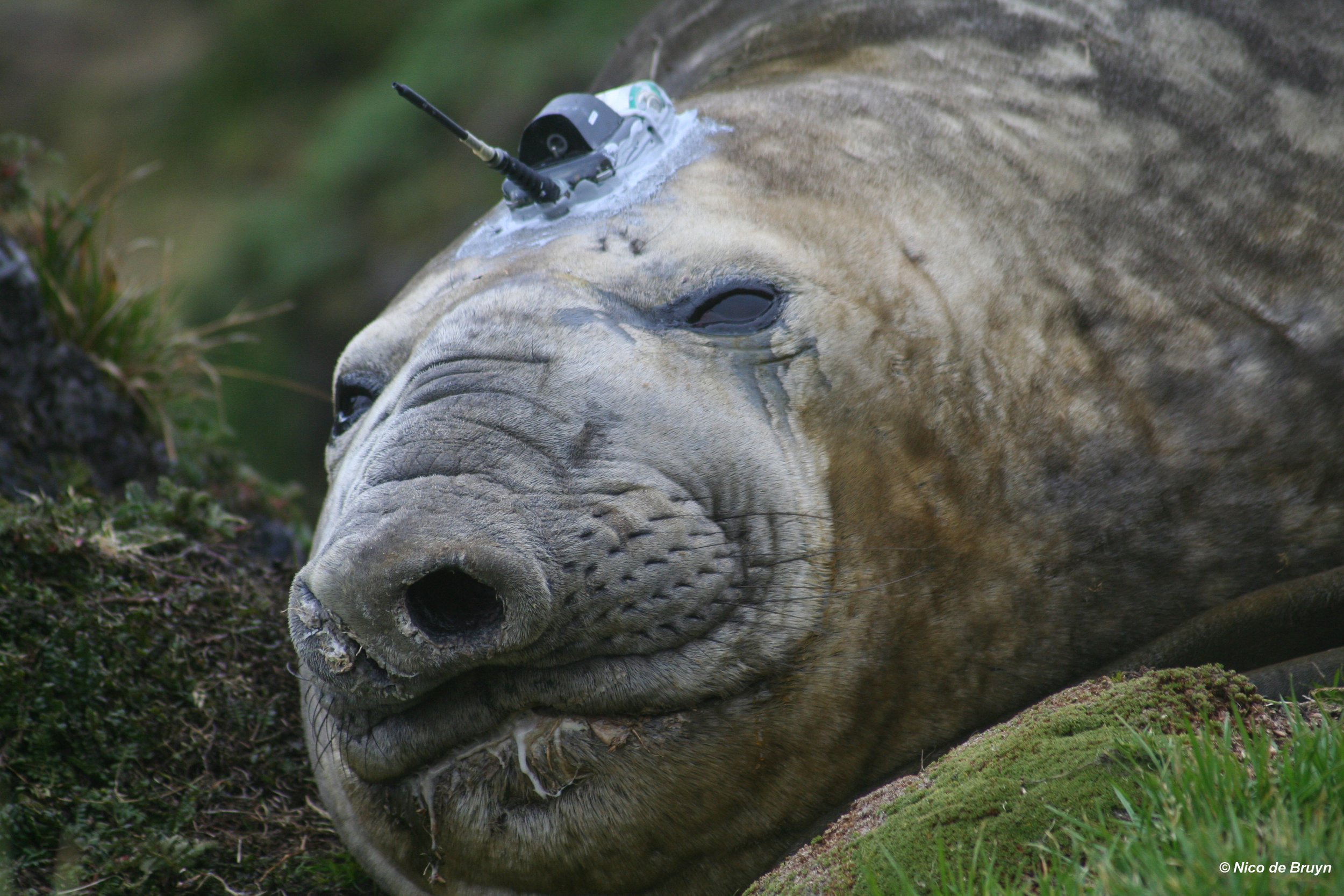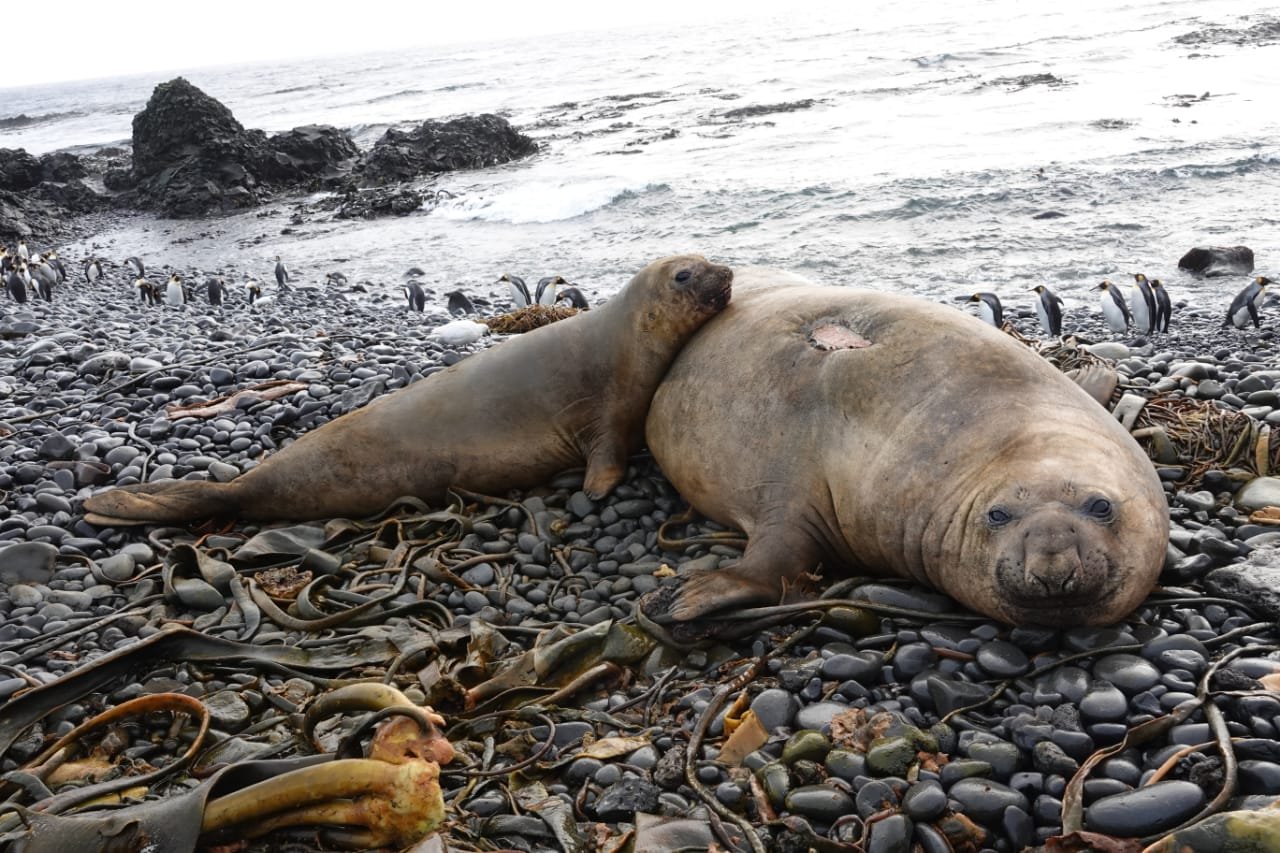Bigger is better: heavier seal pups gain a double advantage
/A new study led by MIMMP postdoctoral fellow Chris Oosthuizen and published in the journal Oikos shows that size matters in more than one way for elephant seal pups.
This paper used data collected over a 30-year period to determine the relationship between weaning mass and fitness in elephant seal pups from Marion Island. Pups were marked and weighed at weaning – a considerable task for the sealers in the field given that elephant seal pups weigh 114 kg on average and up to 190 kg at weaning – and then followed through their lives.
Weaning mass correlated positively with first-year survival (Figure left), but its influence was unimportant for survival of older pre-breeders and breeders. In contrast, a strong positive link persisted between weaning mass and the age of first reproduction, which typically occurs at ages three and four in female elephant seals (Figure right).
Heavier female elephant seal pups survived better in early life and started breeding at a younger age than lighter-weaned pups. The importance of weaning mass on early survival has been reported previously, but this paper draws particular attention to the previously unknown influence of weaning mass on the age at first reproduction. This is a noteworthy finding considering that recruitment only occurs several years after weaning, and because pre-recruitment mortality already imposed a strong selective filter on the population. Reproductive parameters such as age of first reproduction typically impact fitness less than survival in long-lived species, but still influences the dynamics of populations through ensuing effects on other traits (e.g., tradeoffs between reproduction and survival). In growing populations, however, early reproduction increases fitness, indicating the importance of taking the timing of reproduction within the life cycle of an organism into account.
Although variation in weaning mass did not translate to permanent survival differences among individuals in adulthood, it explained heterogeneity and positive covariation between survival and breeding in early life, which contribute to between-individual variation in fitness. Mothers that do not allocate sufficient energy to their pups thus risk reducing their own fitness through lower offspring survival and delayed breeding among surviving offspring.



















